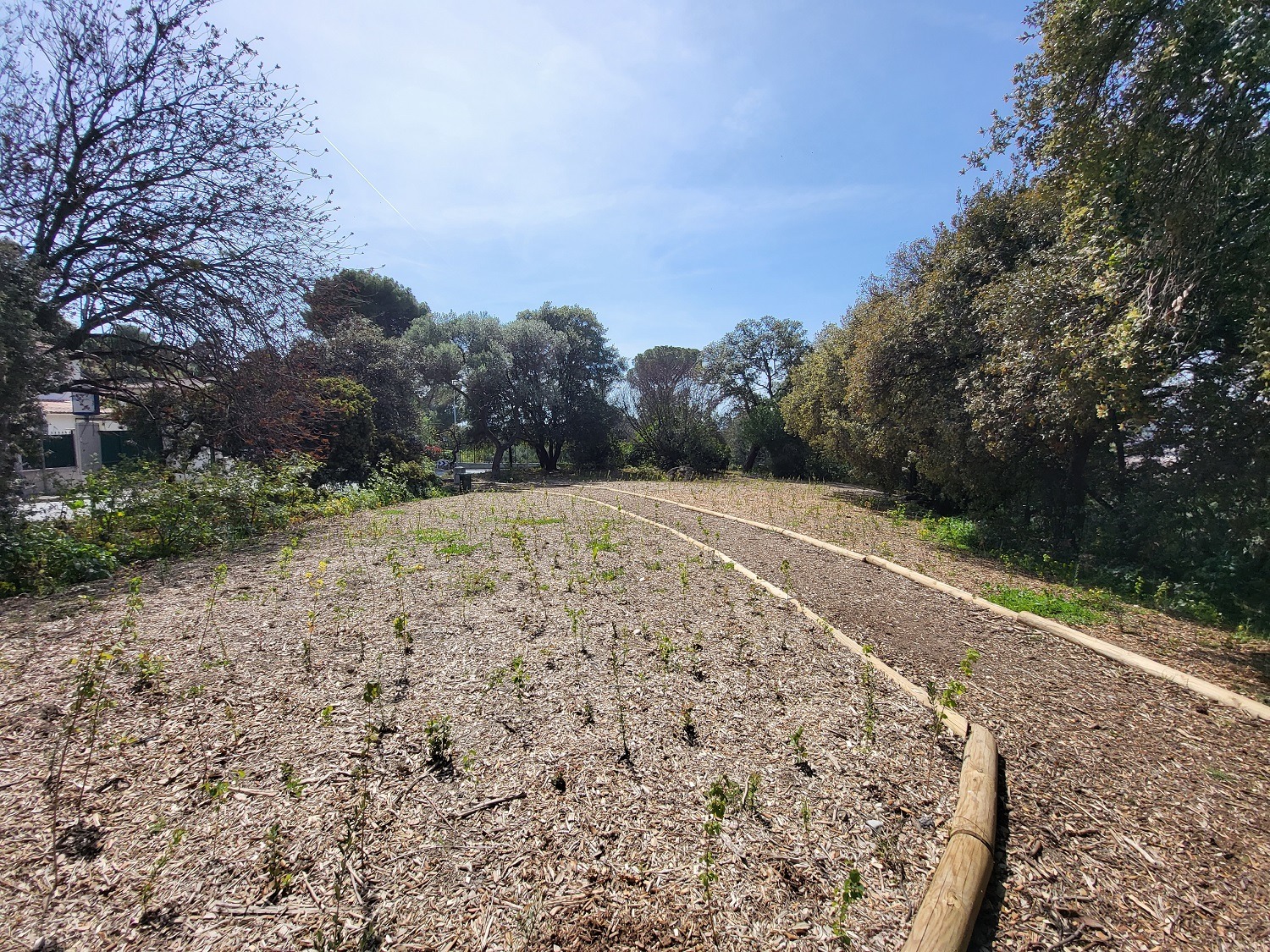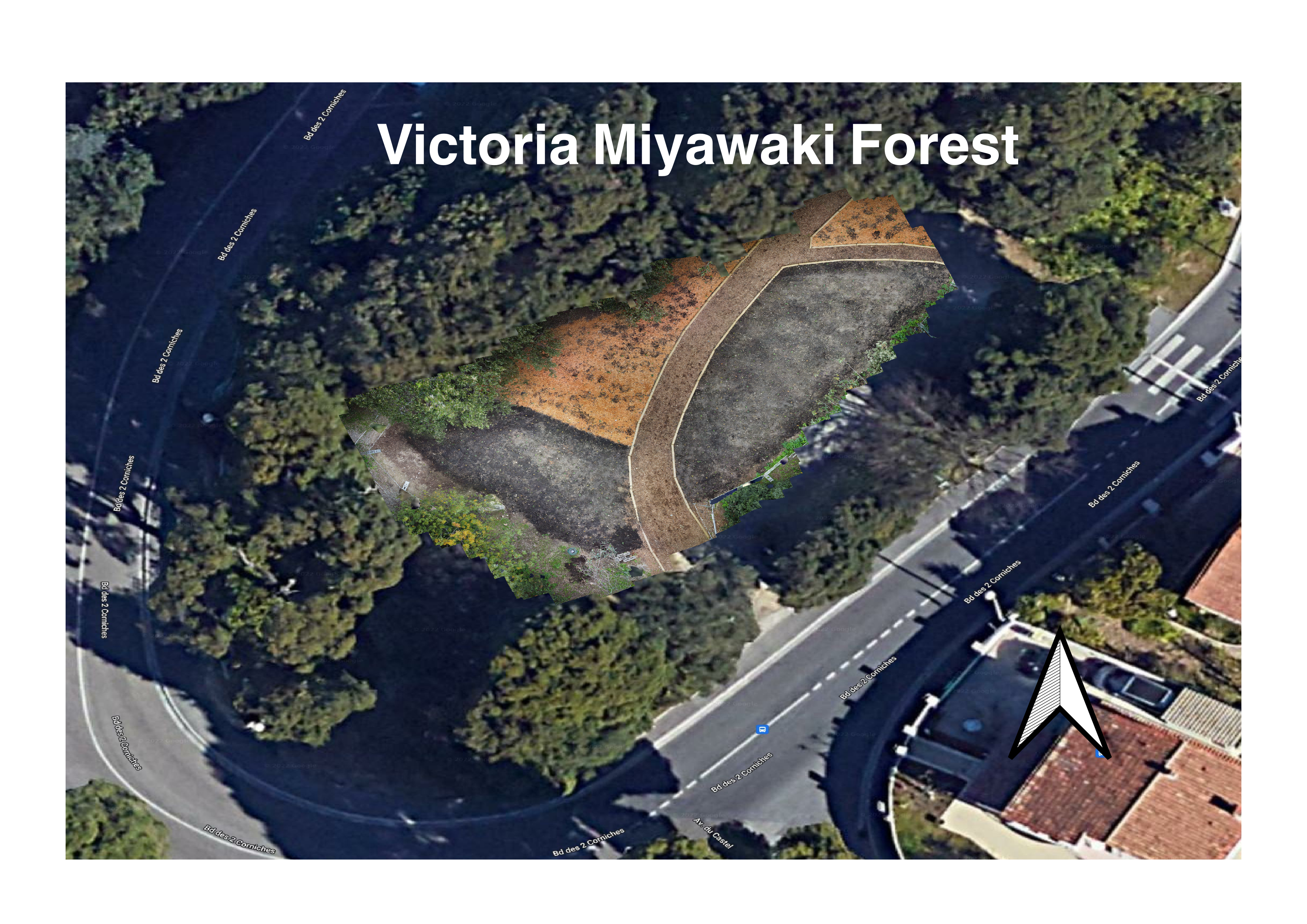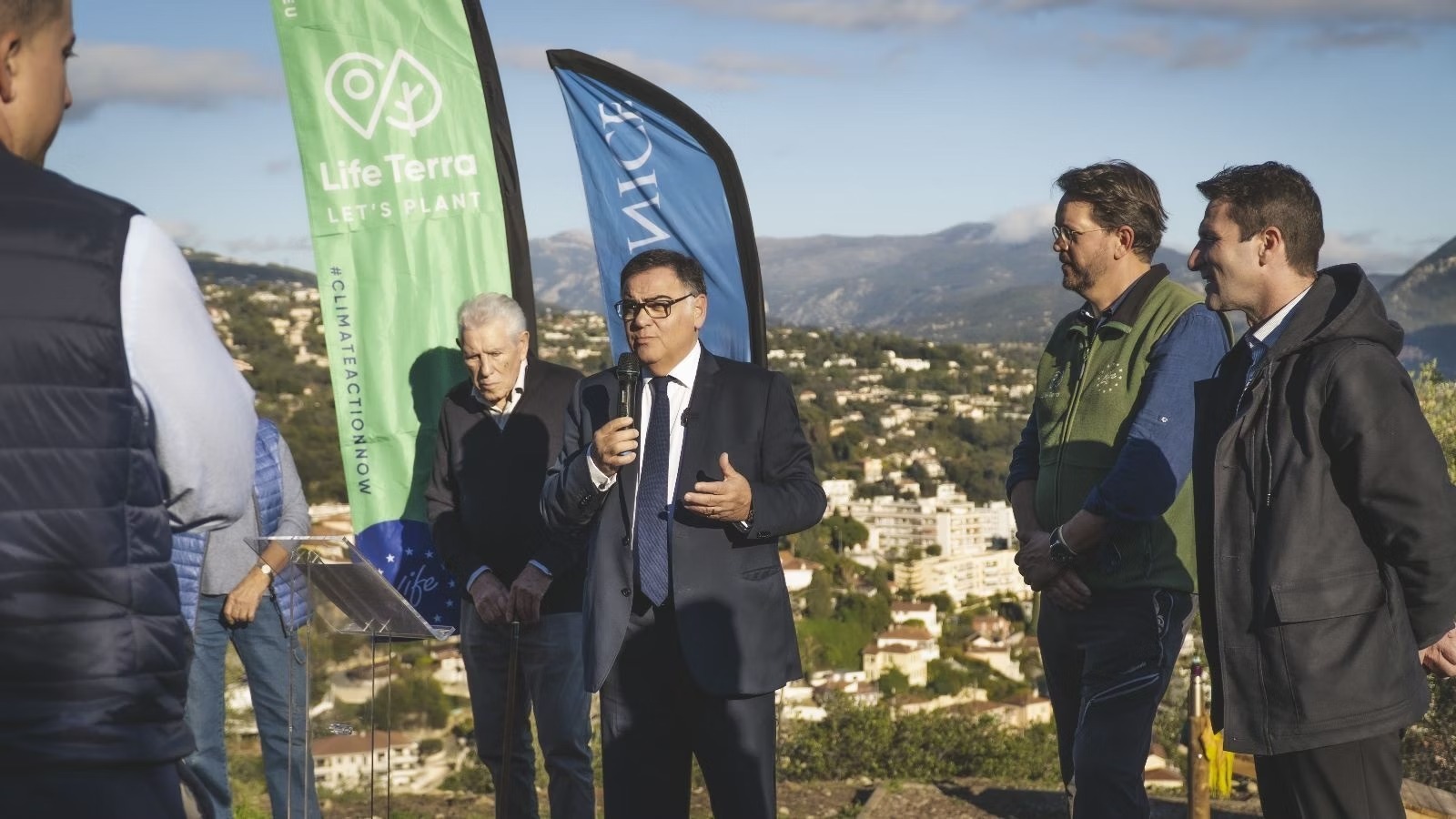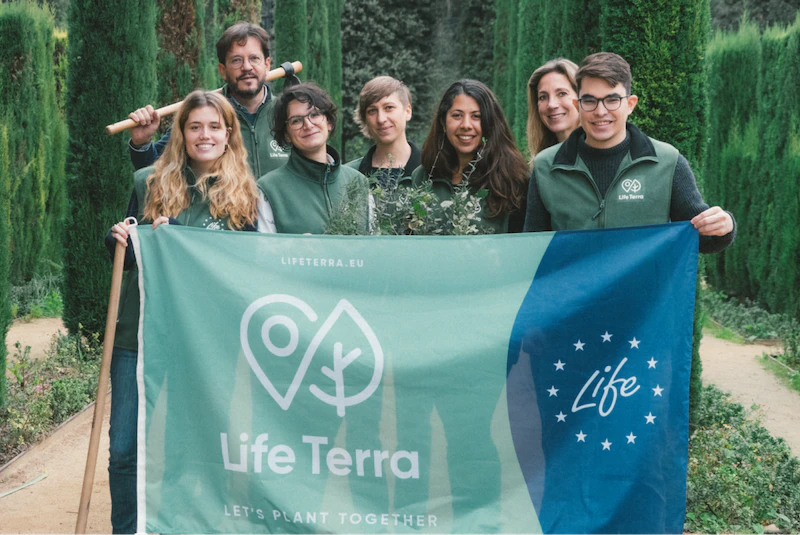Urban forest for climate change
Miyawaki forest – Square Victoria, Nice France a parking transformed into a urban forest
Miyawaki forests are considered to be one of the most effective planting methods for rapidly developing forest cover on degraded land, one of the main principles of which is natural reforestation with trees native to the region.

About the project
The Miyawaki Forest consisted of planting 2,453 plants of 12 different species in Victoria Square Park, located in Nice (France). The planting was carried out over an area of 334 m2, with an average density of 6 individuals per square meter. The project is located in the municipality of Nice (Nice), department 06 “Alpes-Maritimes” belonging to the region “Provence-Alpes-Côte d’Azur” (Figure 1). Specifically, the project area is located in the green area of Square Victoria, located on the Boulevard des 2 Corniches, CP. 06300, which is part of the urban population center.
Carbon Capture and credit issuance
The conservative scenario estimates a total capture of 18 to 23 tons of CO2 in 40 years considering the current scenario and the pessimistic climate change scenario. It is important to mention that in the calculation of the current scenario, the growth of individuals was limited to the growth rate of year 7 since in this period the estimated CO2 capture is 1.03 tn, which is close to the limit of the local CO2 capture capacity (1.46 tn/year). While for the pessimistic climate change scenario, the growth rate was limited to year 6 of the project as the CO2 capture capacity was close to its limit (1.16 tn/year). For this project we consider a capture of 20 tons of CO2 as an intermediate and conservative parameter between the current scenario and the pessimistic climate change scenario.
Victoria Park
Urban Miyawaki Forest
Project Developer:

Certification:
ases On-Chain Protocol
aOCP
Location:
Nice, France
Price evolution based on forecast demand. Not financial advice.
On average, the increase in biodiversity for the period analyzed (10 years) is 93.70%. As mentioned in document IV.3. aOCP Methodology for biodiversity projects, the percentage increase in the Shannon index corresponds to discretized surface unit of 100 m2, so Victoria will have 3.34 units (the surface of the project is 334 m2), corresponding to a total of 130 BBC (Biodiversity Based Credits), which will be issued quarterly as established in the Monitoring Plan of the Project.
NAT5 Score
Key project: VMF-LT01-112022D
Developer: LifeTerra
Person responsible: Sven Kallen
Land owner: City of Nice
Before project development this site was a parking and the richness observed in the surroundings of the site was 6 species.


Verification will be done using satellite data and AI algorithms provided by KANOP©

Carbon Removal: 20 Credits
Biodiversity: 130 Credits
Smart Contract: https://polygonscan.com/address/0x3287df374f54a76f0627f31b8a9657cf629ce33d
Monitoring schedule
| Year | Month of activity | Activity to perform for carbon assessment | Activity to perform for biodiversity |
| 2022 | November 1-15 | Satellite survival and growth monitoring | Plant diversity_00: Baseline |
| December | Project Validation | Plant diversity_01 | |
| 2023 | April/May | Field, drone & survival monitoring | Eco-acoustic_01 |
| September/October | Field, drone & satellite survival monitoring | ||
| 2024 | April/May | Field, drone & satellite survival monitoring | Eco-acoustic_02 |
| September/October | Field, drone & satellite survival monitoring | ||
| 2025 | April/May | Field, drone & satellite survival monitoring | Eco-acoustic_03 |
| September/October | Field, drone & satellite survival monitoring | ||
| 2026 | April/May | Field, drone & satellite survival monitoring | Eco-acoustic_04 |
| September/October | Field, drone & satellite survival monitoring | ||
| 2027 | April/May | Field, drone & satellite survival monitoring | Eco-acoustic_05; plant diversity_02 |
| September/October | Field, drone & satellite survival monitoring | ||
| 2028 | April/May | Field, drone & satellite survival and growth monitoring | Eco-acoustic_06 |
The Victoria project has been widely disseminated and communicated to different social and community interest groups. It counts on the involvement and commitment of political actors and public decision-makers for its execution and permanence.
| Stakeholder | Organization | Role |
| Christian Estrosi | Municipality | Mayor of Nice |
| Pierre-Paul Leonelli | Municipality | Delegated Mayor |
| St Pancrace | School center |
The event was announced through digital news channels:
As a way of involving society, an event was organized in which schoolchildren were invited to participate and conduct the reforestation. The event took place on November 16th in La Clua park. On Friday, November 18, a planting ceremony was held in La Victoria, where the park’s neighbors and civil society organizations were invited to participate. The reforestation of Victoria is part of the “One tree per inhabitant” initiative promoted by the mayor of Nice. In addition, the Victoria site was previously a parking lot, so the reforestation will create a new green area for the residents. The project has been well accepted by the population as it is promoted by the municipality. Since the project is promoted by the municipality of Nice, the communication channel is open for the society to share their concerns.

For this screening, the methodology selected was aligned with the UNDP Enterprise Risk Management Policy. This tool allows to project Developers to identify potential project-related social and environmental risks and impacts and appropriately-scaled assessment and management measures to address those risks.
| Potential Social and Environmental Risks | Rating the ‘Impact’ of a Risk | Rating the ‘Likelihood’ of a Risk |
|---|---|---|
| 1.8 Harvesting of natural forests, plantation development, or reforestation? | 2,2 | Not likely |
| 2.2 Outputs and outcomes sensitive or vulnerable to potential impacts of climate change or disasters? For example, through increased precipitation, drought, temperature, salinity, extreme events, earthquakes | 3,4 | Moderately likely |
| 3.7 Influx of project workers to project areas? | 2,2 | Low likelihood |
| 8.5 The application of pesticides that may have a negative effect on the environment or human health? | 2,2 | Not likely |
| 8.6 Significant consumption of raw materials, energy, and/or water? | 1,8 | Very likely |

R2: 2.2 Outputs and outcomes sensitive or vulnerable to potential impacts of climate change or disasters? For example, through increased precipitation, drought, temperature, salinity, extreme events, earthquakes
Prevention:
1.-The developer will ensure the irrigation to prevent plant mortality caused by dryness and increasing heat.
I2.- In the event of severe drought, plants should be given shade to prevent evaporation and protect them from direct sunlight. Plants can be protected by using shade nets.
Mitigation:
IIn the event that drought significantly affects plant mortality (more than 40% according to the plan), the issuance of credits should be adjusted and verified with the aOCP direct committee.
Some great things about this project
This project promotes biodiversity, the fight against climate change and makes the city greener
2,453 plants
12 different species
City greener
Local commitment
People on the ground
People behind this project

Life Terra foundation
Team


 by
by